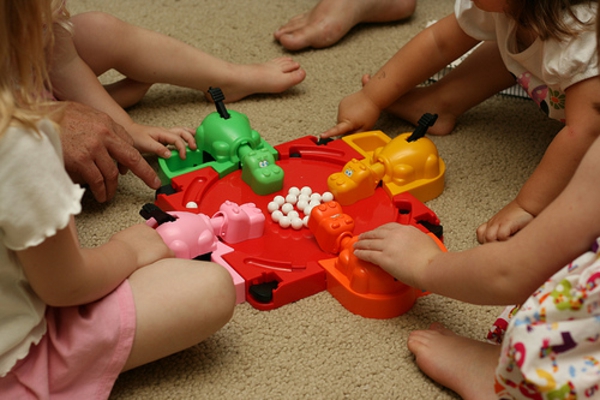Kids will always play wherever they are in the world. In playgrounds, at the streets, in gymnasiums, or in the backyard, there are always opportunities to mingle and play with other children and, just be, well… kids.
Dane youngsters are no different. When not holed up at home playing their favorite toys and board games, Danish children rush outside to run and play with the other kids. Some of their games are derived from local folklores while others are variations of popular children’s games played in many countries. You will notice that traditional Danish games are group and outdoor games. While these games are still played today, they could decrease in occurrence due to increasing popularity of electronic and computer games. I’d like to think this will never happen though!

Gemme Fingerbøl
This is the Danish variation of Hide the Thimble. The game is usually played indoors. One player will hide the thimble while the other players will exit the room. Depending on what has been agreed on, the thimble can be completely or partially hidden. To help the other players find the thimble, the person who hid it may give clues to its location. The game then restarts once the hidden thimble has been found.
Laenkefange
Translated as “link capture” or “capturing chains”, this is a variation of the tag game. Laenkefange is best played outdoors as it requires a lot of running around. The game starts with one “it” who will then catch another player, thus tagged. The two will join hands and try to catch another person. When the third person joins the group/link, they’ll catch another to be the fourth person of the group. Once the fourth person has joined the chain, they split into two chains and repeat the capture-and-link process.
Mus
Literally translated as “mouse”, this game is played by at least 3 children and involves eating of pebernødder or peppernuts. Peppernuts are actually cookies made of the usual cookie batter plus cinnamon, cardamon, and pepper. There are no actual nuts in these little cookies but they’re traditionally shaped into tiny balls or nuts. In the game, the pebernødder are the “mice”.
The game starts by lining up 10 or more pebernødder on the table and select one of them as the “mouse” while the “it” closes his/her eyes. The “it” will then eat the pebernødder one by one until he gets to the selected “mouse” and the other players shout “MOUSE!”. Players take turns to be “it” until they run out of cookies or don’t want to eat cookies anymore!
Slå Katten af Tønden
One of popular Danish children’s games is Slå Katten af Tønden or Knock the Cat Out of the Barrel, or just simply Barrel Cat. The game is of medieval origins where townsfolk place a cat in a barrel and knock the barrel out until it breaks and the cat escapes. The superstitious belief is when the cat is chased out of the town, bad luck is also driven away.
In modern times, this is no longer practiced… or else you’ll be scorned by animal rights advocates and cat-loving people! Knock the Cat Out of the Barrel now uses wooden barrel-shaped piñata decorated with black cats and other designs. The “barrel” contains candies, sweets, and fruits. Children are given sticks and take turns to break the barrel. In one version, there can be several barrels and the first two children – a boy and a girl – who break the barrel and spill the candy, or cat, wins. They’re each given a crown. In another version, only one can win and the winning player gets to be crowned as the King of Cats (Kattekonge) if a boy wins or the Queen of Cats (Kattedronning) if it’s a girl.
Spark til Daasen
Spark til Daasen, or Kick the Can, is the Danish version for freeze tag. In this game, one will be “it” and other players will run away and hide from the “it” player just like in Hide and Seek. When a player is found, the “it” will then kick the can and shout the name of the found player. Captured players are placed in designated area, or “base”. Free children can release them by tagging them just like in freeze tag and they can hide again.
Have you played some variations of these Danish games when you were a kid? Please share!
Roan Manguera writes about all things Danish for international readers.
5 Favorite Games Of Danish Kids

